Mary Anning: Statue of fossil hunter unveiled in Lyme Regis
- Published
- comments
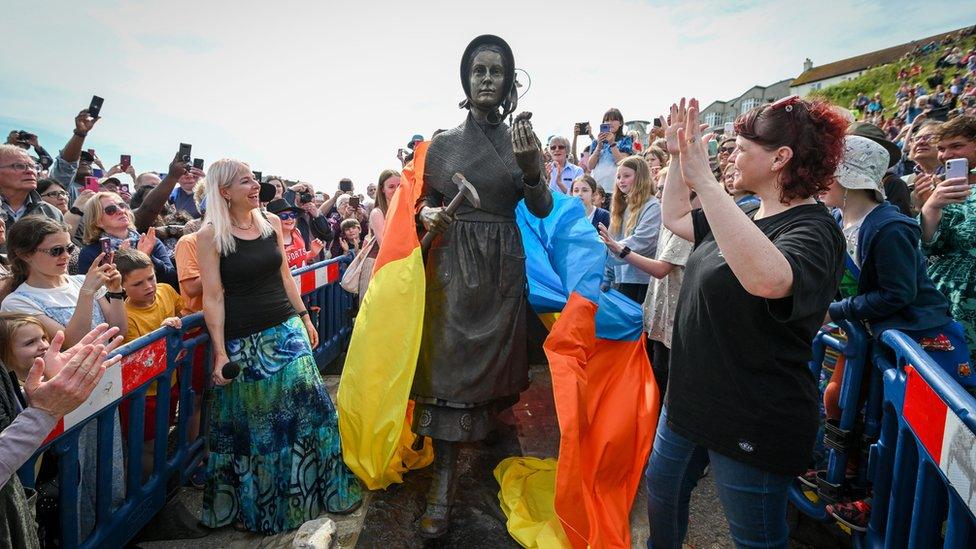
The statue of Mary was unveiled on what would have been her 223rd birthday!
A statue of the fossil hunter Mary Anning has been revealed!
The statue was unveiled at a special ceremony on Saturday 21 May in Lyme Regis, in Dorset, where Mary grew up.
Mary Anning was a palaeontologist in the 19th Century. She hunted fossils and made lots of important discoveries that have shaped the way we think about prehistoric times.
As a woman in the Victorian times from a poor family, Mary didn't get credit and recognition for the work that she did during her lifetime.
The statue of Mary and her dog Tray, has been placed by Church Cliff beach, near to where Mary lived, and the beaches where she made her amazing discoveries.
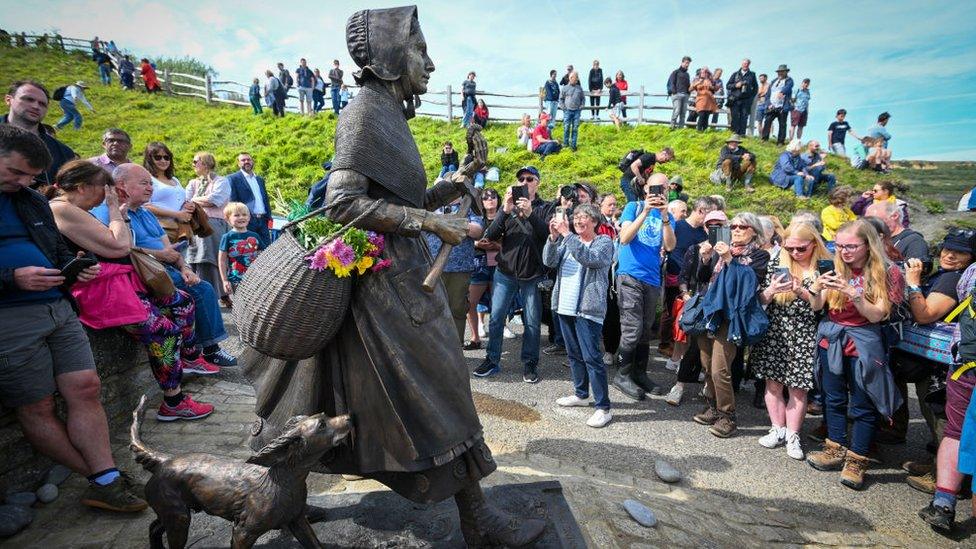
"Mary Anning - welcome back to Lyme Regis!" cheered Professor Alice Roberts, an anthropologist and a big supporter of the campaign to get a statue, as Mary's statue was unveiled in front of a crowd.
Speaking about the statue Professor Roberts said: "It makes Mary Anning visible as a role model for any woman wanting to get into science. This is her place, where she was from and where she made all her discoveries."
"But she also represents the change we need in our society - we need to push further and bring more people into science," she said.
The mission to get a statue of Mary
We spoke to Evie in 2019 to find out why she campaigned for a statue of Mary Anning.
The decision to make a statue of Mary Anning came from a campaign started by a local school girl called Evie.
Around five years ago, Evie was hunting for fossils with her Mum when she asked if they could visit the statue of Mary Anning.
When Evie found out that there was no statue of Mary, she decided to write to her local council and do something about it.
The council agreed, and a crowd-funding campaign called 'Mary Anning Rocks' was launching to help raise money to build the statue.
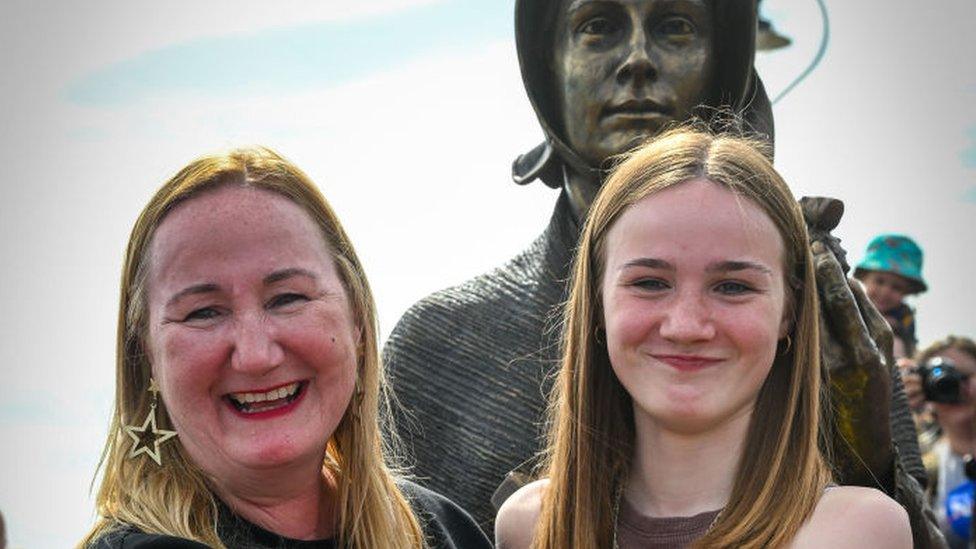
Evie now (right) with her Mum (left) pose in front of the new statue
In total more than £100,000 was raised, and artist Denise Sutton, who is known for making the Land Girls monument at the National Arboretum, was asked to make the statue of Mary.
Evie, who was 11 when she started her campaign, is now 15 and said: "The main reason I wanted to do it was to make sure she got the recognition she deserved."
"I knew that one day it was going to happen, but obviously now that it's finally here I'm very happy and very proud about it."
Professor Alice Roberts, an anthropologist and big supporter of the campaign, said: "It's about making sure that anyone who visits Lyme Regis knows that this really important woman was there doing that work in the early days of palaeontology."
Who was Mary Anning?
WATCH: This animation by BBC Ideas tells the story of the young fossil hunter Mary Anning using sand from the beach where she lived and worked
Mary Anning was born into a poor family on 21 May 1799 in the English seaside town of Lyme Regis.
She spent a lot of her childhood hunting for fossils on beaches in the area with her father and brother, and they sold what they found to try to make money.
She called them 'curiosities' before she learnt more about exactly what fossils were - the remains of ancient creatures, which are now hidden in the rocks under our feet. In places where ancient layers of rock are exposed, like on cliff faces, they can be found.
Her father taught her everything he knew about fossils. When he died Mary continued with his fossil work.
One day, her brother spotted an unusual skull in the cliffs. At just 12 years old, Mary chipped away to find the rest of the fossilised bones and dug them out.
She didn't know at the time, but Mary had just found the first skeleton of an ichthyosaur (which means 'fish lizard').
It would provide evidence for the theory of the extinction of dinosaurs, so it was incredibly important.
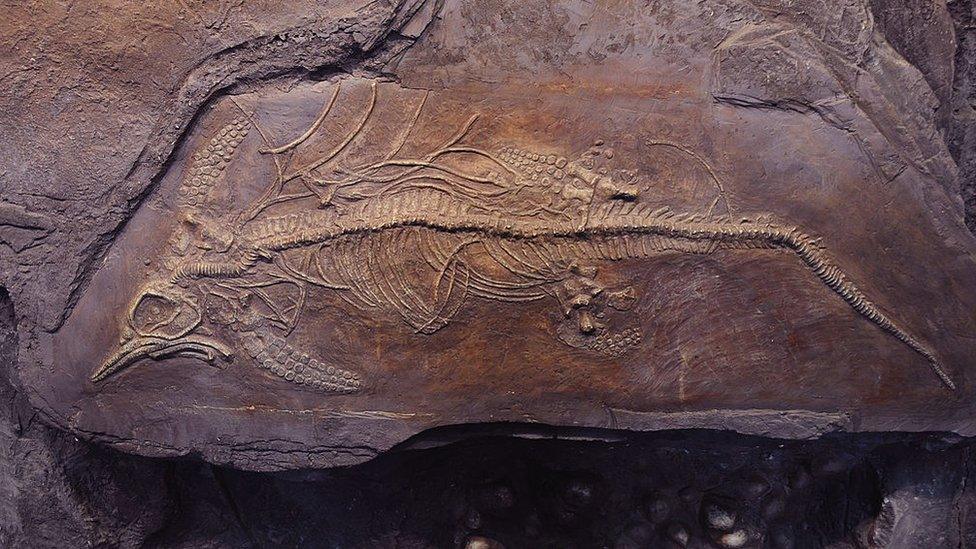
Mary discovered the first fossil of an ichthyosaur - an ancient reptile, which was half fish, half lizard
She went on to make many more important discoveries, including the first plesiosaur skeleton at the age of 22.
As a poor Victorian woman, though, she never received the recognition she deserved for the amazing work that she did.
It was only after her death in 1846, at the age of 47, that the Geological Society of London made her an honorary member.
Today, she is remembered as one of the greatest fossil hunters that has ever lived.
- Published30 September 2021
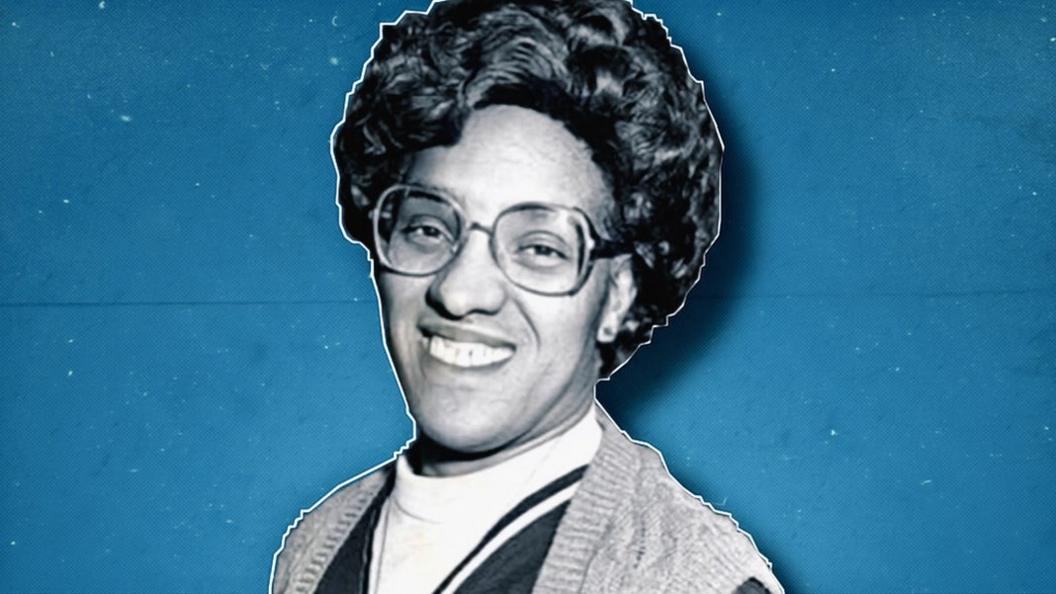
- Published7 March 2023
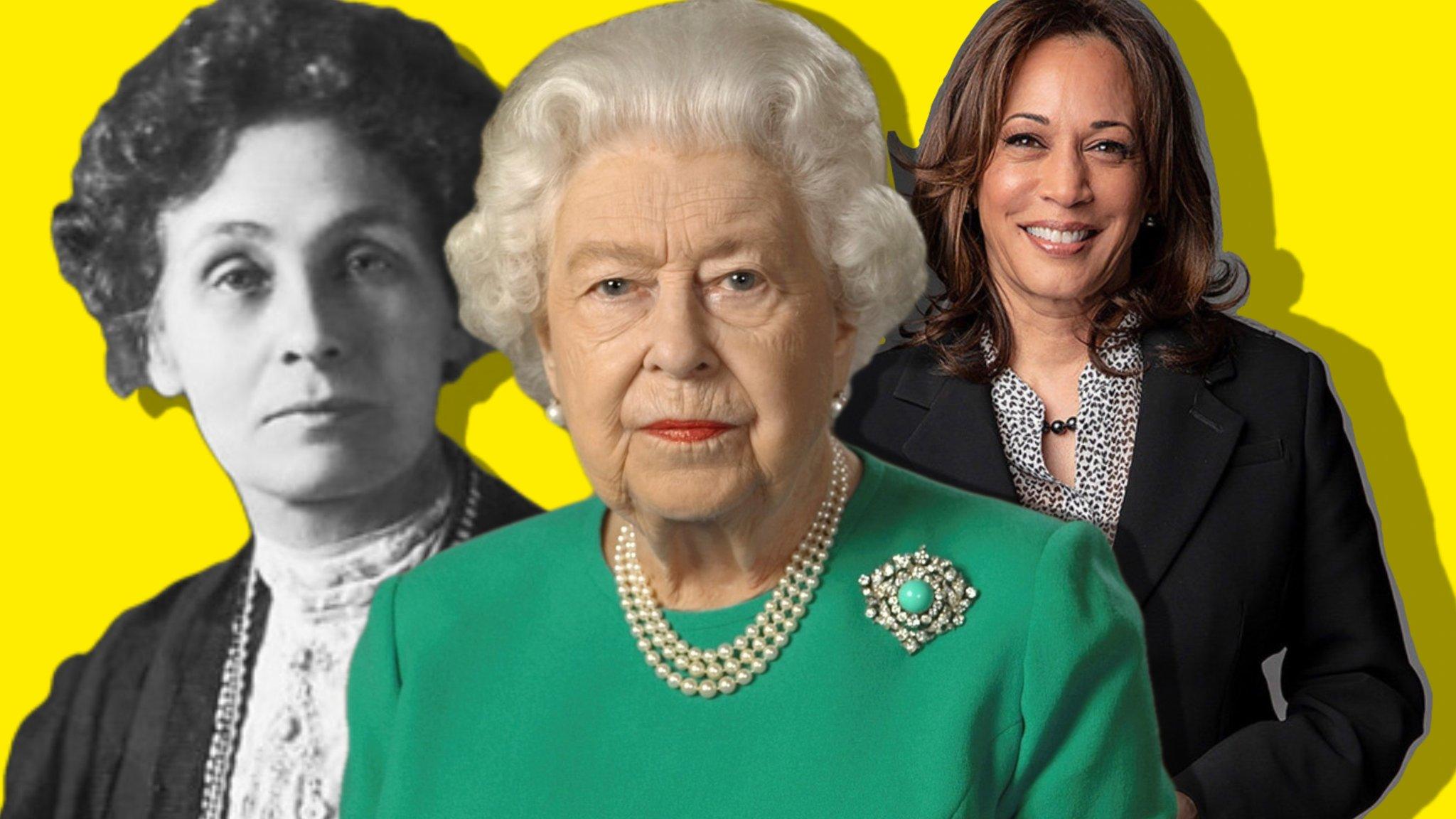
- Published25 April 2018

